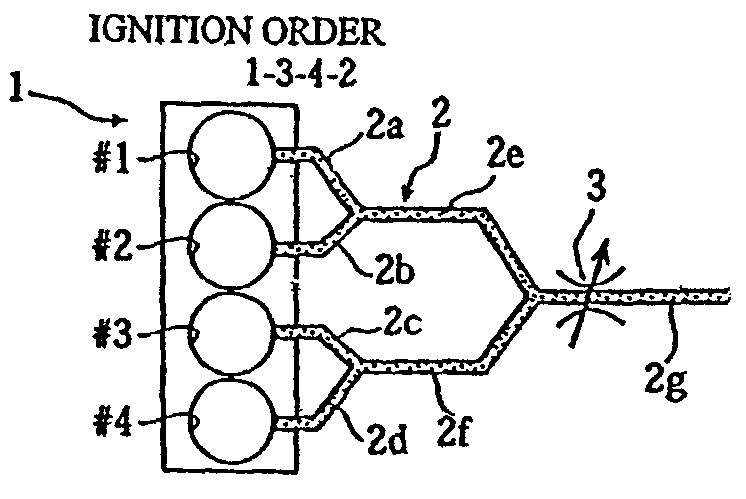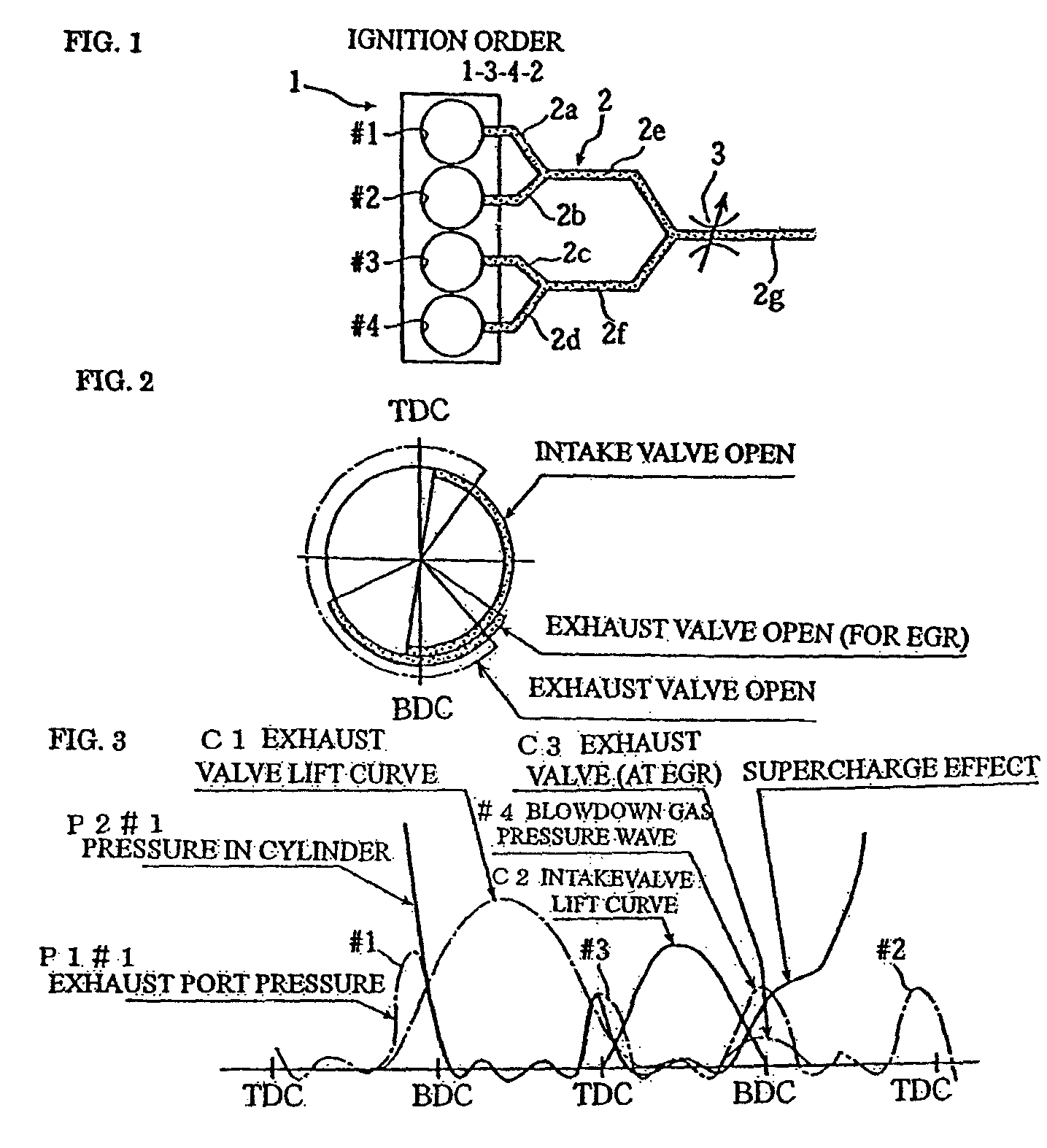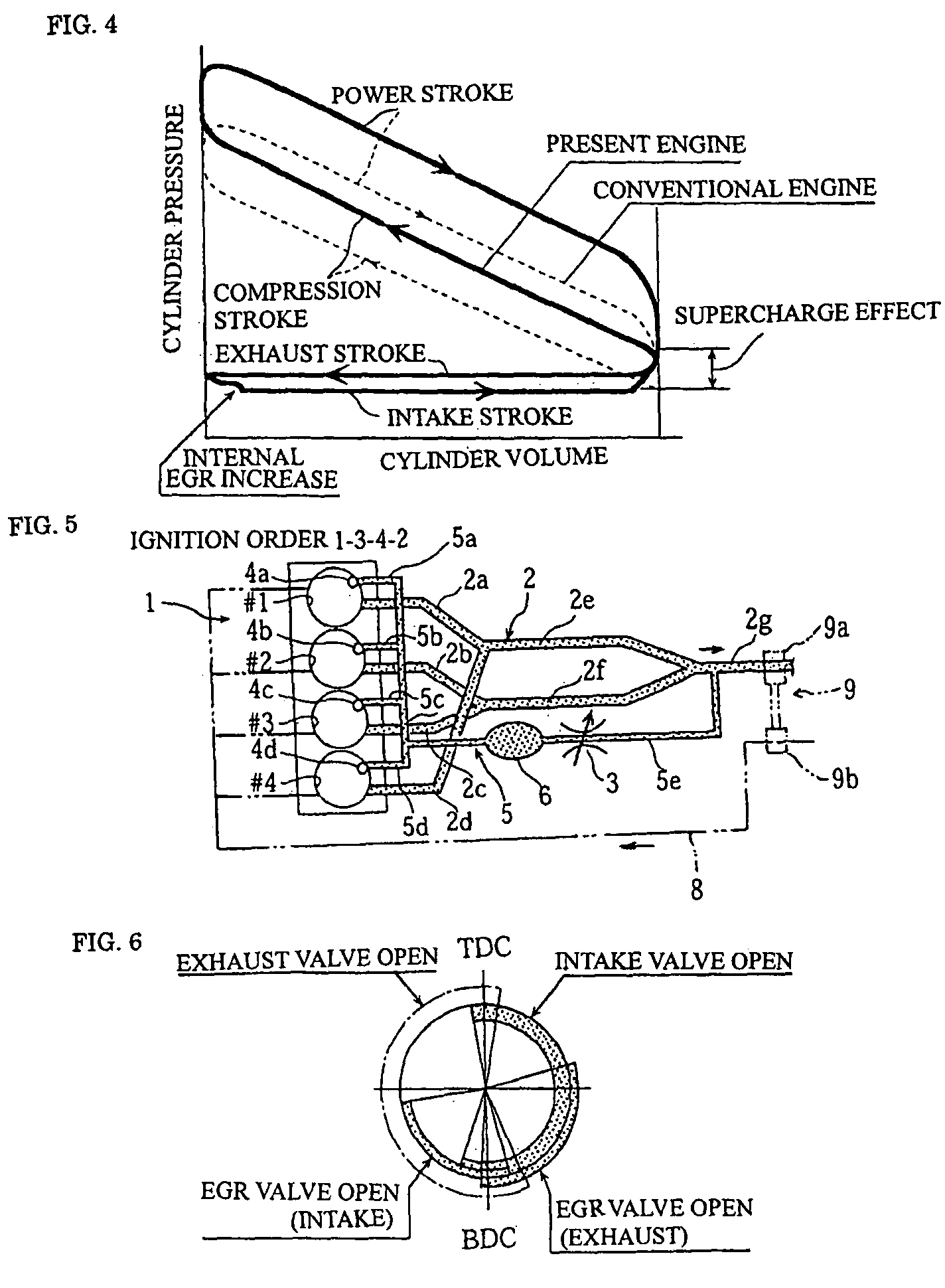Engine
a technology of engine and gas tank, applied in the field of engines, can solve the problems of inability to increase a load to more than a half load of conventional engines, loud combustion noise, and large amount of fuel supply, and achieve the effects of reducing the amount of required egr gas, slowing down, and low load
- Summary
- Abstract
- Description
- Claims
- Application Information
AI Technical Summary
Benefits of technology
Problems solved by technology
Method used
Image
Examples
Embodiment Construction
[0073]Hereinafter, modes according to the present invention will be described based on the attached drawings.
[0074]FIGS. 1 to 4 are views to illustrate an engine supercharging a blowdown pressure wave according to a first mode of the present invention, in which FIG. 1 is an overall block diagram, FIG. 2 is a valve timing diagram, FIG. 2 is a characteristic view showing a valve timing, a blowdown gas pressure and a pressure in a cylinder, and FIG. 4 is a view showing a pressure-volume relation.
[0075]In the drawings, “1” denotes a four-cylinder HCCI engine including a first cylinder #1 to a fourth cylinder #4 to be ignited in the order of the cylinders #1-#3-#4-#2. Accordingly, in view of the ignition timing, the first cylinder #1 and the fourth cylinder #4, and the second cylinder #2 and the third cylinder #3 have a phase difference of 360 degrees in terms of a crank angle, respectively.
[0076]“2” denotes an exhaust device including first to fourth exhaust branch pipes 2a to 2d connec...
PUM
 Login to View More
Login to View More Abstract
Description
Claims
Application Information
 Login to View More
Login to View More - R&D
- Intellectual Property
- Life Sciences
- Materials
- Tech Scout
- Unparalleled Data Quality
- Higher Quality Content
- 60% Fewer Hallucinations
Browse by: Latest US Patents, China's latest patents, Technical Efficacy Thesaurus, Application Domain, Technology Topic, Popular Technical Reports.
© 2025 PatSnap. All rights reserved.Legal|Privacy policy|Modern Slavery Act Transparency Statement|Sitemap|About US| Contact US: help@patsnap.com



